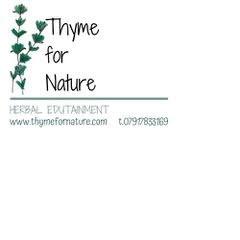
4 minute read
vii Notes from the Brew Room Ann King
vii: Notes from the Brew Room
Threee Steps to Heaven
Advertisement
Ann King
A sunny outdoor social gathering, with good conversation accompanied by an energising herbal infusion seems a pretty perfect way to spend free time this Spring. Cold or hot infusions are among the simplest and most effective ways of taking the benefits of herbs either— drunk, or used topically in a therapeutic footsoak or compress. Why not throw caution to the wind, grab a few blankets and enjoy one of these Green Tea infusion recipes, whilst indulging in a restorative and immune-boosting footsoak, and taking a breathing practice?
Green Tea leaves come from the same Camellia sinensis plant as ‘builders’ and other Black Teas, but the processing of the leaf is different— a little like the differences between Cacoa and Cocoa in the chocolate process. Green Tea is dried or withered and then heated. Black Tea goes through an extensive fermentation process resulting in the oxidization that causes leaves to darken. Green Tea has been used medicinally for over 3000 years and is believed to aid the digestion of fatty or oily foods, normalising the metabolism. It contains tannins, vitamin C, polyphenols— mainly the flavonoids catechin and EGCG — and the amino acid l-theanine. Recent research has linked l-theanine to the lowering of anxiety and stress, and to management of the symptoms of depression. Green Tea continues to be the mainstay of the traditional Japanese Tea ceremony, albeit in Matcha forms.
In the last few years, Tea has been grown closer to home— in Perthshire and other areas of the UK that enjoy acidic soil conditions. One of the slightly more unusual, but delightful combinations we have found is Green Tea, dried Hibiscus flower and fresh Ginger. The resulting drink is beneficial to the immune system overall and makes a thirst-quenching iced tea in the warmer months. We developed a slightly more seasonal, local variation in recipe two, to include the Wild Raspberry leaves currently unfurling amongst the Brambles (Rubus spp.). To balance and complement, we added locally foraged and dried Rosehips.
One 1 tsp Green Tea (Camellia sinensis) 1 tsp dried Hibiscus (Hibiscus sabdariffa)— also called Red or Jamaica Tea, this contains vitamin C and is used as a cough remedy in Africa and Asia 2 slices fresh Ginger (Zingiber officinale)— as a general tonic and anti-inflammatory aid
Two 1 tsp of Green Tea (Camellia sinensis) 2 tsp dried Rosehips (Rosa canina)— a source of vitamins C, B E and K, and a tonic 2 tsp finely chopped Wild Raspberry (Rubus idaeus) leaves— a natural source of potassium and magnesium Local Honey, to taste
Three 1 tbsp sliced fresh Turmeric (Curcuma longa)— a known stimulant used externally for bruising and internally to relieve catarrh 1 tbsp sliced, fresh Ginger (Zingiber officinale)— used as a stimulant and rubefacient 1tbsp chopped Lemongrass (Andropogon spp.)— for its delicate and uplifting citrus fragrance Epsom salts (optional)
For our footsoak we settled on a blend of Ginger, Turmeric and Lemongrass as a good combination aimed at inflammation and congestion in the respiratory system. This blend also provides a soothing and warming fragrance to lift the spirit. Simply decoct the ingredients for approximately 20 minutes, strain, add to a large basin and top up with warm (not boiling) water. Add some Epsom salts for maximum effect and bathe the feet for 15-20 minutes. The aforementioned blankets can act as a tent to seal in the vapours and heat. Alternatively, the same blend can be used as a compress, by wrapping the herbs in muslin and steaming the parcel gently to release the active constituents. Then apply the compress to the skin whilst warm (but not hot). Just leave in situ for up to an hour, or massage it over to the area, using circular motions to increase blood flow. Note: the footsoak does turn the skin yellow temporarily, but this effect is less marked if fresh Turmeric is used.
…and breathe… For general lung health we can take an hour of aerobic exercise every single day— preferably outdoors —to get the blood pumping around the body, bringing oxygen to tissues and removing waste toxins. Perspiring helps with the elimination of toxins through the skin. A focused, deep and rapid breathing practice— like the ‘bellows breath’ (Bhastrika pranayama) can also support the excretion of toxins through the lungs.
Disclaimer No recipes are intended to replace medical advice and the reader should seek the guidance of their doctor for all health matters. These profiles and recipes are intended for information purposes only and have not been tested or evaluated. Ann King is not making any claims regarding their efficacy and the reader is responsible for ensuring that any replications or adaptations of the recipes that they produce are safe to use and comply with cosmetic regulations where applicable.












